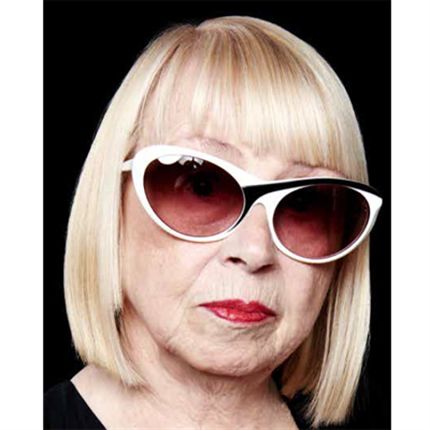The Mother of Modern Haircolor
Colorists everywhere have Annie Humphreys to thank for bringing haircolor out of the basement and into the limelight.
By Jackie Summers
Annie Humphreys is a tiny lady. Well under five feet tall. But her diminutive physical size is in direct opposition to her oversized influence on professional haircolor. Her work over a career that spanned almost 50 years with Vidal Sassoon impacted generation after generation of haircolorists—including a significant number of today’s most popular and important artists. In fact, one could say quite truthfully that Annie is the mother of modern haircolor.
Why? First, consider the color techniques and designs you admire—and most likely do everyday in the salon. Annie did them first. Foiling? “Annie was doing foil when everyone elsewas pulling hair through a cap,” remembers Lucie Doughty, now Editorial Director of John Paul Mitchell Systems and a former student of Annie’s at Vidal Sassoon. Balayage? “We called it ‘Flying Colors,’” says Annie. “We did it in the ’70s when the economy wasn’t very good. We would paint two or three colors onto strategic areas. It was quick and there was no upkeep.”
There’s more. Lots more. Dimensional color; beachy blondes; clean, clear, frozen high-lifts; shine lines; primary and jewel tones; shades of pearl and slate; hair stenciling; tortoiseshell. Do your haircolor history homework. Look up images from the ’60s, ’70s and ’80s and you’ll find all of the above. By former Vidal Sassoon International Color Director Annie Humphreys. Executed impeccably. Without a fraction of the color products and tools available today.
Vidal Sassoon International Creative Director Mark Hayes worked with Annie Humphreys for more than 30 years. “The influence Annie has had on the way people wear haircolor today cannot be overestimated,” he says. “Her groundbreaking techniques, product innovation and uncompromising creativity have paved the way for thousands of hair professionals, and on any street in any city in the world today, you can see people wearing haircolor that can be traced directly back to Annie’s original ideas.”
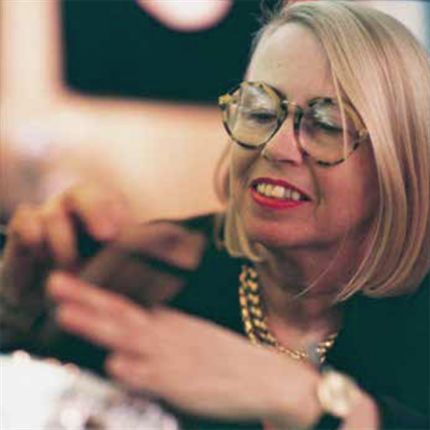
When Haircolor Was Strictly Hush-Hush
When you consider all of the color innovations Annie pioneered, it’s important to understand how haircolor was perceived when she began her career in the early 1950s in London. At the time, only two types of women colored their hair—actresses and ladies of a certain reputation. “We had a big clientele of ladies who worked in the night,” Annie laughs. “And not just regular ladies. Some were having liaisons with people in high places. So they were high class. They were great clients because they didn’t want to look exactly as they were born. They wanted their color to look nicer.
”At the same time, the ’50s version of celebrity clients were the studio “starlets”—young women who were part of the film studio stables of the day. Most of them were required to be blonde by the studio bosses, and many were sent to Annie’s salon. “We did quite a few of those,” she remembers. “All bleach blondes. Never red for some reason. I guess they thought blonde was young.”
Of course, some women came in for gray coverage. In those cases, the color had to match the client’s natural shade completely because nobody could know they were coloring their hair. It was a rather shameful secret. Understandably, there was no such thing as referrals, because nobody admitted to having their hair colored. Hairdressers were equally secretive.
They would never share their color strategies, and if they did record a formula, they often wrote it down incorrectly. “Lots of people put the wrong information onto the cards,” Annie explains, “so if the client went to someone else in the salon, they got screwed up.”
Watch Mary Rector-Gable’s Exclusive Interview With Annie!
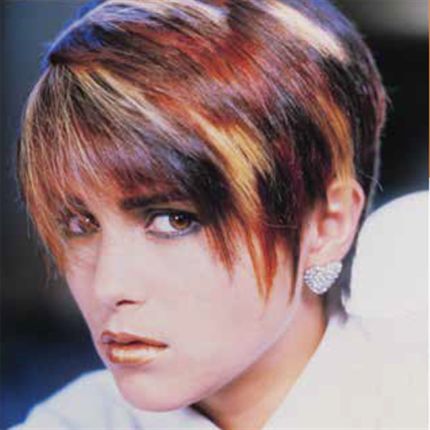
“The sections interlocked like a jigsaw puzzle,” Annie says of this model she did in 1986. “They were C-shaped. That’s why the color looked so swirled and blended rather than blocky.”
The Revolution
In 1958, Annie was employed at a salon on London’s Bond Street that was purchased by a young hairdresser named Vidal Sassoon. Intrigued by Sassoon’s ideas and energy, she stayed on after he bought the business. What happened next is well-documented. Vidal wielded his shears, cutting hair into exciting new shapes, and in the process, did away with the weekly wash-and-set, as well as with the perms women wore to support their hairstyles between those weekly appointments.
For haircolor, though, little changed at first when Sassoon started cutting hair. “I remember Vidal’s first show was in Scotland for Wella,” Annie says. “I didn’t go because I was a colorist and I didn’t really matter. Everyone wanted to see the haircuts. And at that point, it was all about ‘the man.’”
But ultimately, it was Vidal’s haircuts that also brought about a revolution in haircolor. His geometric bobs and Five-Point Cut were all about perimeter lines, and those crisp lines showed up best on dark hair. “Suddenly,” says Annie, “everyone wanted dark hair because if you had light hair on light skin, you couldn’t see the hairline. That was in ’63, ’64 and that’s when color for fashion, not just to cover gray, really started.”
While the Sassoon bob kicked off a trend toward fashion color, it was The Firefly that put Sassoon haircolor, led by Annie, on the map. “The Firefly was the first photo we did that showed the shape and dimension of a cut and color,” Annie explains. “[Former Sassoon Creative Director] Christopher Brooker did the cut. I did the color. Up until that point, we always made the roots the same color as the ends—which of course isn’t natural, because hair is always lighter on the ends. With The Firefly, the color was two dimensional—something that hadn’t been done in haircolor before.”
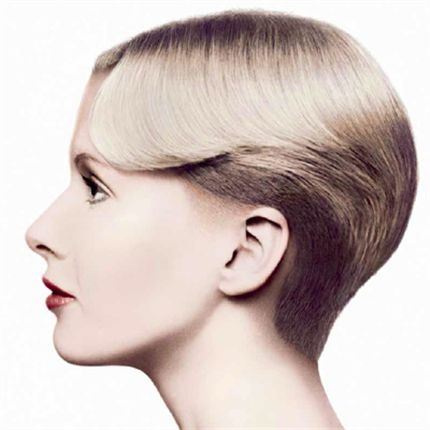
The Firefly “was the first time there was dimension in the cut and color. It was the first time that color wasn’t the same all over the head,” Annie says.
Cut And Color Equality
As the Sassoon phenomenon transformed hair, Annie took the lead in haircolor. “Vidal used to call her the Sassoon mascot,” remembers Tim Hartley, who served as International Creative Director for nearly 20 years. “He spoke of her with great affection. He used to say, ‘I’m interested in that little bit extra,’ and he always got ‘extra’ from Annie.”
Working shoulder to shoulder with the Sassoon artistic directors during her 48 years with the company, she was exposed to some of the best cutters in hair history. Vidal, Christopher, Tim, Roger Thompson and Mark. From them she developed a deep reverence and respect for the haircut, and that point of view always informed her work. Her color emphasized head shape, lines and angles, with an ongoing sensitivity as to where the light would hit the hair. “I was always trying to color with an awareness of the haircut,” she says. Adds Tim, “We always played around with ideas. I would cut, then I would say something to Annie like, ‘Can I have a ribbon or a border on this?’ She’d say, ‘Just leave it to me, I’ll have a look.’ And she’d come up with something amazing.”
As the years went on, color eventually moved up from its supporting role in the Sassoon collections and trends, to equal billing and at times, a starring role. Again, fueled by Annie. “Vidal often said we changed people’s lives with our scissors,” Tim remembers. “Annie changed people’s lives with haircolor.”
One of the lives Annie changed was that of renowned colorist and color educator Beth Minardi. “Annie is one of a kind!” Beth declares. “Twenty years ago, she was coloring ‘outside the lines,’ doing things colorists consider new today. I was stunned and delighted as I watched her create her Ribbons look, placing broad strokes of jewel tones in a blonde base. Her respect for head shape and for where colored strands would fall in the hair changed the way I color hair today.”
Along with the artistry of haircolor, Annie’s contribution to the business side is immeasurable. Early on, she realized that in order to be considered a color professional, one had to offer professional-quality color. “I knew it was not about squeezing out one color and chucking it on,” she asserts. “Anyone can do that at home. You have to put two or three colors in different areas for shape and balance. You have to mix individual shades for each client. Customization is what professional color is about.”
She also understood the impact of novelty and innovation on a salon’s bottom line. “When we did Flying Colors, it was great because you could use up the last two or three inches at the bottom of the color tubes,” she recalls. “If the economy was bad, I would also do silly things like painting the walls of rollers with haircolor, or applying color with pastry piping bags. One of the magazines in the ’70s or ’80s did a whole feature of my quick, mad color things. It was good for business.”
Watch Mary Rector-Gable’s Exclusive Interview With Annie!

“In this photo from 1977, I put red highlights in blonde hair. Nobody knew why. But you see the play of the colors and you get a completely different look. It gives the blonde a glow,” Annie says.
Just Annie
There’s another group that owes Annie Humphreys a measure of gratitude, and that’s the women in hairdressing who, only in the last decade or so, have had the confidence to put their names on the doors of their salons.
As a young stylist in the ’50s and ’60s, Annie was often the sole female. “At that time, women didn’t last long in the salon. They would find a nice young gentleman and go off and get married and then they didn’t have to work anymore,” she says. “But I was absolutely potty about what I was doing. I was always working, I always stayed. To me there was always something to learn—it was a lot more interesting than hanging around with the other girls talking about some boring dance.” That said, Annie doesn’t necessarily view herself as a pioneer for women in the industry. “I suppose because I was the only girl, nobody thought anything about it. I was one of the guys. Or rather, I was just Annie.”
But others do see her as a groundbreaker for women—and are grateful. “She is a color hero, and one of the first women to stand out in a sea of well-known men,” says Beth. “Thank you, Annie!”
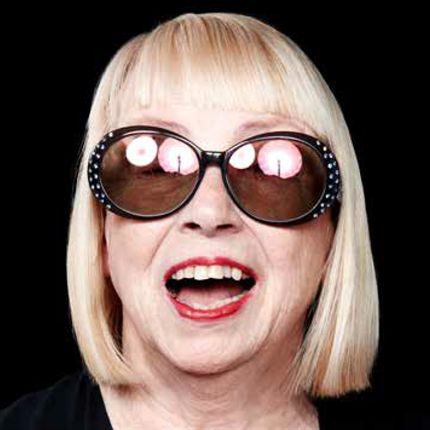
Don’t Mess With Teacher
Teaching and sharing is at the core of the Vidal Sassoon ethos, and naturally, as Technical Director and ultimately International Color Director, it was Annie’s responsibility to lead the color education. The Sassoon empire was vast, and she conducted shows, classes and workshops throughout Europe, Asia and the United States. Wherever she went, she imparted the Sassoon way of discipline, consistency and a tireless work ethic. Along with a healthy dose of fear. “She was very tough,” laughs Tim. “People were terrified of her. You’d see a big, burly hairdresser disagree with her and she’d say, ‘You’re going to do it my way, or you’re not going to do it at all.’ But that’s what I like about her. She’s not afraid. She keeps you focused. If I was misbehaving, she’d tell me.”
Annie’s dedication was also an endless source of inspiration for her Sassoon colleagues. “She was very senior when I started,” says Tim. “But from the beginning, she worked as hard as me, or harder. We would often burn the midnight oil getting ready for a show or a class. It always had to be perfect. I remember once we were prepping for a show at a place called The Winter Circus in Paris. Today it’s a fashion venue; then it was an actual zoo and there were bears and tigers in cages in our prep room! Annie just got on with it. Later we had to take this ramp up onto the stage, and horses had just been onstage before us, and there was horse poo all over the ramp. Annie was in this beautiful white suit and super high heels, and I had to pick her up and carry her over the poo onto the stage!”
“Annie has been there for me at all of the important stages of my career,” adds Mark. “And always with pragmatic, sound advice. She has been my mentor and guiding light as she has been to so many others.”

“This collection from 1996 was all about a
ndrogyny and individualism,” Annie shares.
For Annie, the days of colorists keeping their technical secrets to their dying days were a thing of the past. She insisted on Sassoon colorists and students keeping copious records and formulas, as well as head sheets based on thorough hair analyses that included previous color, existing color, length, porosity and damage, all assessed top to tip on every single client. “You can’t create until you master the basics,” Annie believes. “I wanted to give people the discipline and the foundation, so once they left me, they could think for themselves and make the right decisions. Before Sassoon, people were scared to help other people be better. I was tough because I wanted people to go out there and be fabulous.”
As a result, many of today’s fabulous artists speak of her with great admiration. “Annie has always been the queen of color to me,” comments Christel Lundqvist, TIGI® Global Technical Creative Director. “Through the early stages of my career, I was hugely inspired by her work and how she mastered the bright color palette. I always thought she had such taste, flair and phenomenal creativity, which inspired me to want to be the very best in my field.”
Even the newest members of haircolor’s inner circle are fans. “I had the pleasure of meeting Ms. Annie Humphreys in London last year,” says social media star Guy Tang. “She’s such a sweet, elegant and nice lady. Meeting her was one of the highlights of my trip to London!”
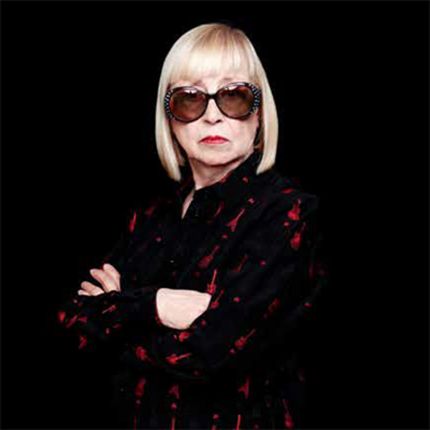
Keep Walking
Annie’s career required an enormous amount of travel, and anyone who logs years on the road knows how exhausting the constant slog through airports and hotels can be. Yet for many of Annie’s co-workers and companions, those tiring times is when Annie’s humor, resilience and resourcefulness were at their finest.
“We were in Florence for a show,” Tim remembers, “and we were all due to fly home that evening. Suddenly, all of the Alitalia flights were cancelled. In those days, we worked with really big models and they all had bookings the next day, so they all started going absolutely mental. I panicked. Annie sorted it out. She arranged for us to take a train to Reno, and catch early flights the next morning. Then we got to the train station, and the bloody wardrobe trunk wouldn’t fit on the Italian train! Again, Annie to the rescue—she sent one of the boys to get a porter and had them check it into storage until it could be picked up. That night, Annie and I and the makeup artist shared a bed because there were so few hotel rooms, but everyone caught their flights the next morning.”
Mark remembers an educational tour in Spain. “We had been on the road for a number of weeks and the team was pretty exhausted,” he recalls. “So at dinner one evening, Annie decided to energize everyone by performing a bullfighting routine on the dance floor! It was unforgettable!”
“We represented the Sassoon brand internationally,” says Tim. “And Annie was great company. We’d go thrifting on our days off. We enjoyed food at the most beautiful restaurants in the world. We’d go for long walks in cities in America where it wasn’t safe to go out. We’d pass all sorts of strange people and she would turn to me and say, ‘Just keep walking, darling.’”
Watch Mary Rector-Gable’s Exclusive Interview With Annie!
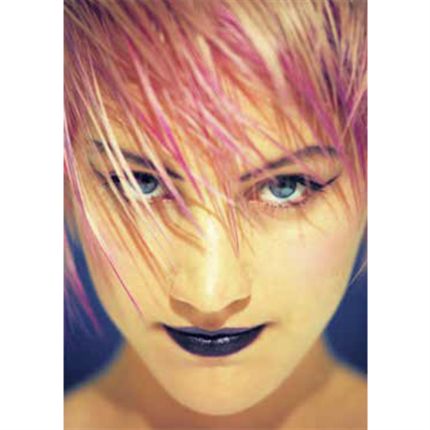
“I love blondes,” Annie declares. “Here I wove together a mixture of
blues, pinks and purples in a blonde base.”
In The Garden
Annie retired from Sassoon in 2006, and she’s only done haircolor once since then, along with Mark Hayes, for a special feature in Britain’s Hairdressers Journal. Her days are spent gardening, (“that gives me lots of color!”), caring for her dogs and enjoying exhibitions and plays. She says she’s finally able to do things she never had time to do when she was busy working. “I was often booked up years in advance,” she says. “So even if I made a plan to see an exhibition or play well ahead of time, nine times out of 10 I wouldn’t make it because something happened. Retirement means you’re free to go off and do what you fancy.”
However, retirement doesn’t mean Annie has withdrawn from the beauty world entirely. She still accepts speaking engagements and invitations to judge haircolor competitions. “We often judge color competitions together in the UK,” says Christel. “Her eye for color is second to none.”
Her passion for color also spurs her to keep an eye on what’s going on. While she won’t single out any particular artist who has impressed her recently because she doesn’t want to play favorites or leave anyone out, she says, “There are many people today doing very nice stuff.” What’s more, she’s delighted by the artistry she sees in what she calls “unhuman” colors—the brights and neutrals and pastels. “It’s great to see the crazy colors I was doing years ago,” she says. “Some people are doing them really well. And there are a lot of good products that let you get those colors. Before, you had to do a lot of mixing and matching. Now the stuff comes in easy-to-do formats. And it’s great that so many people want them. They’re expressing themselves and everyone accepts it.” The ladies of the night would be proud.



